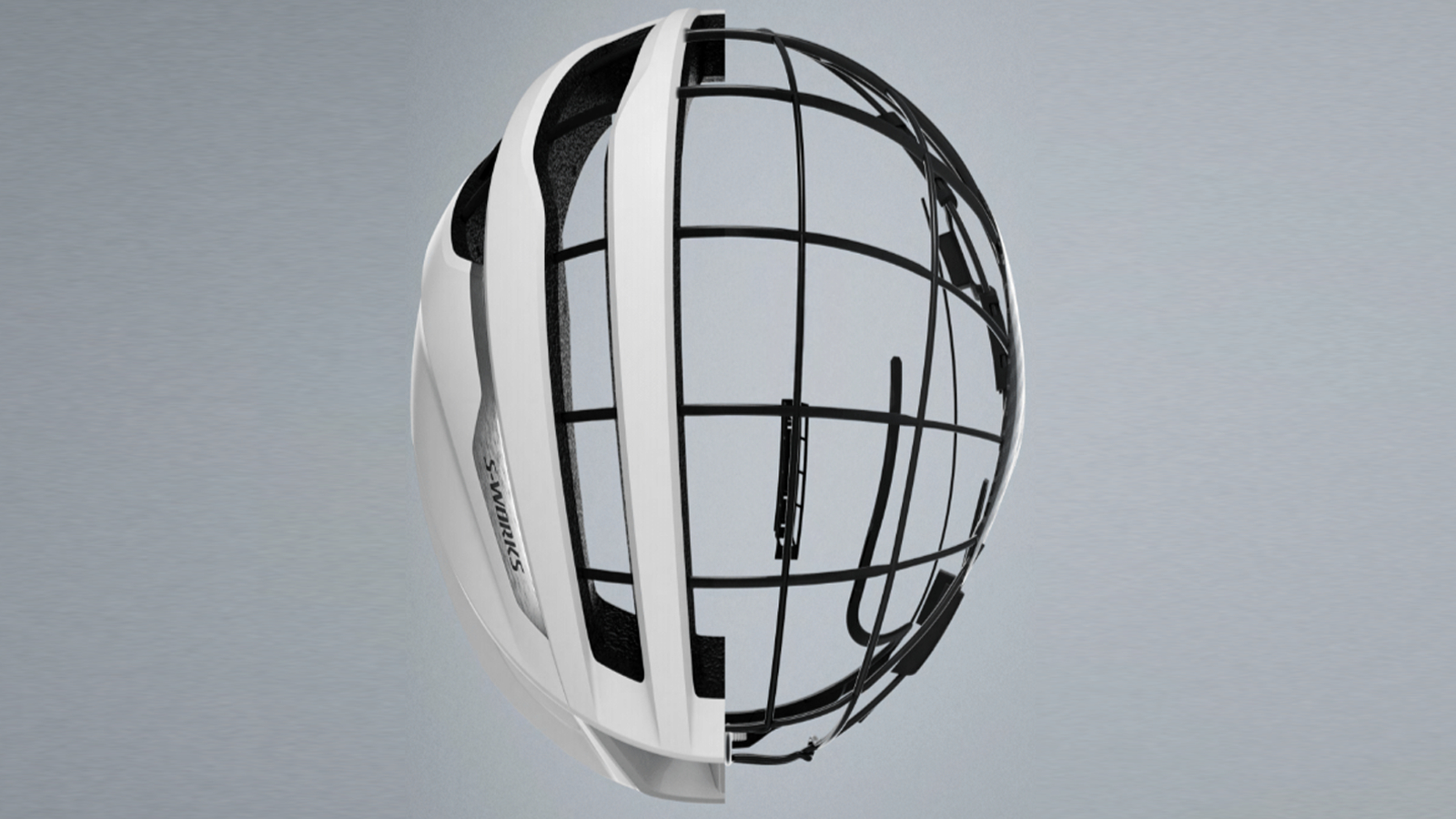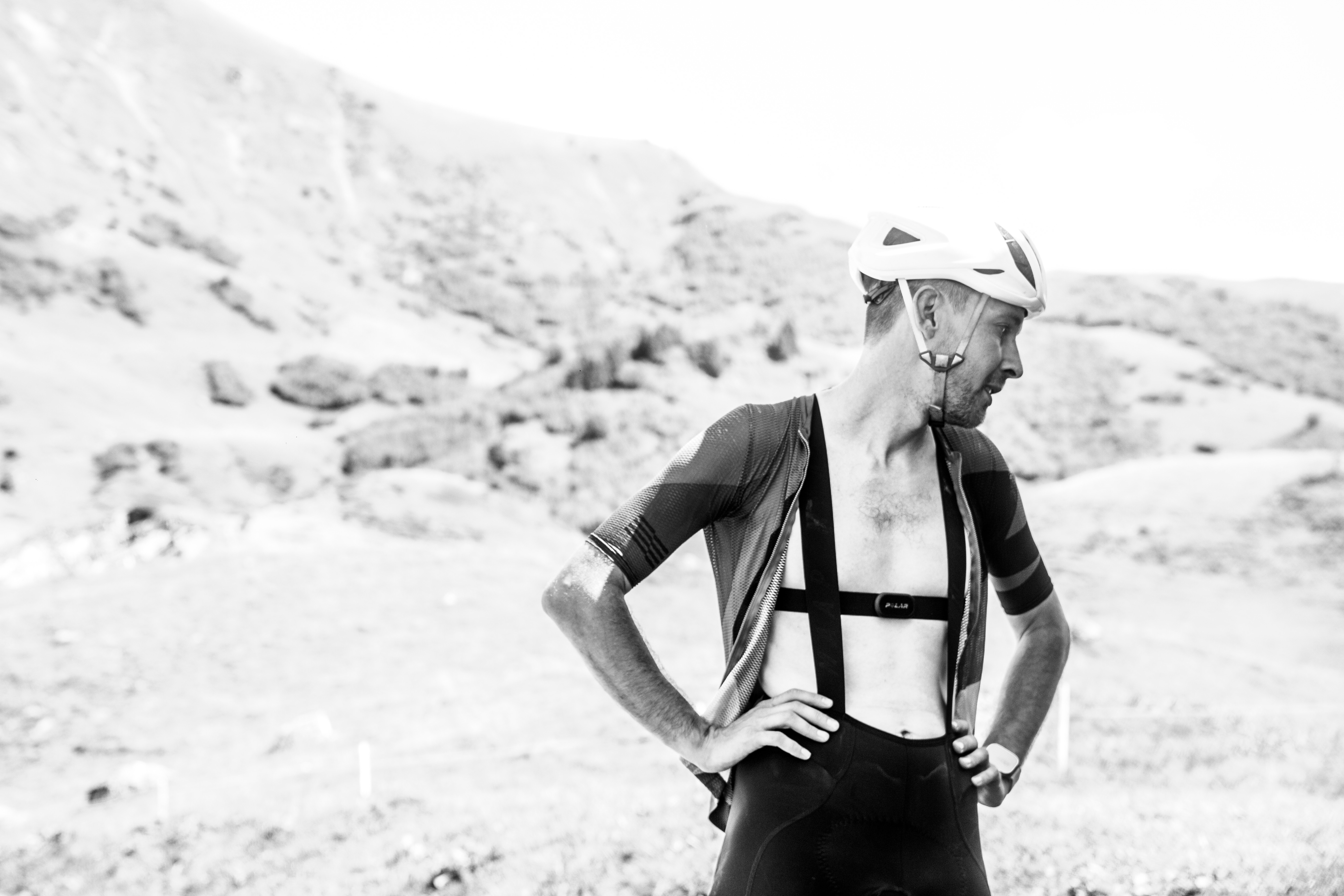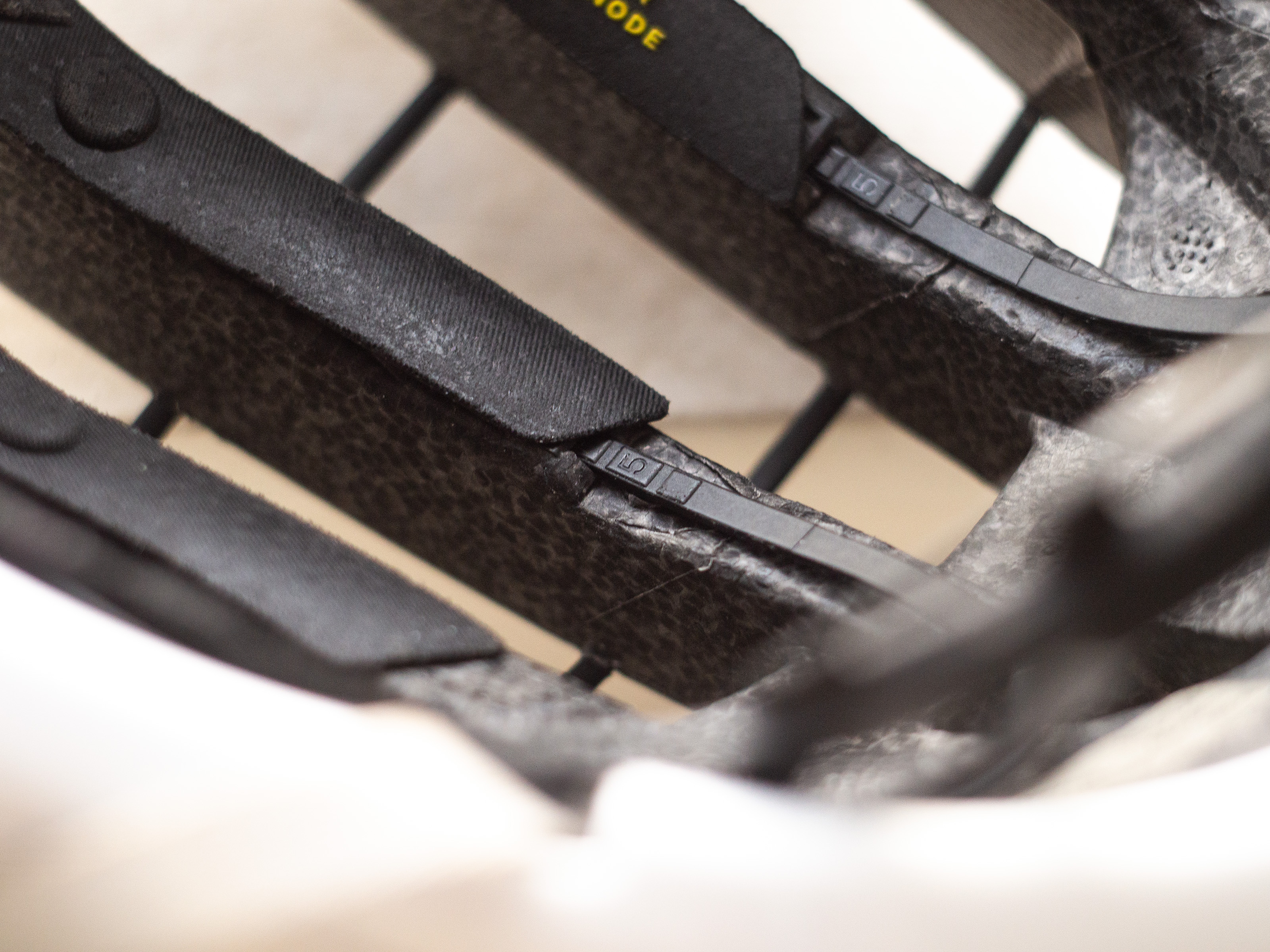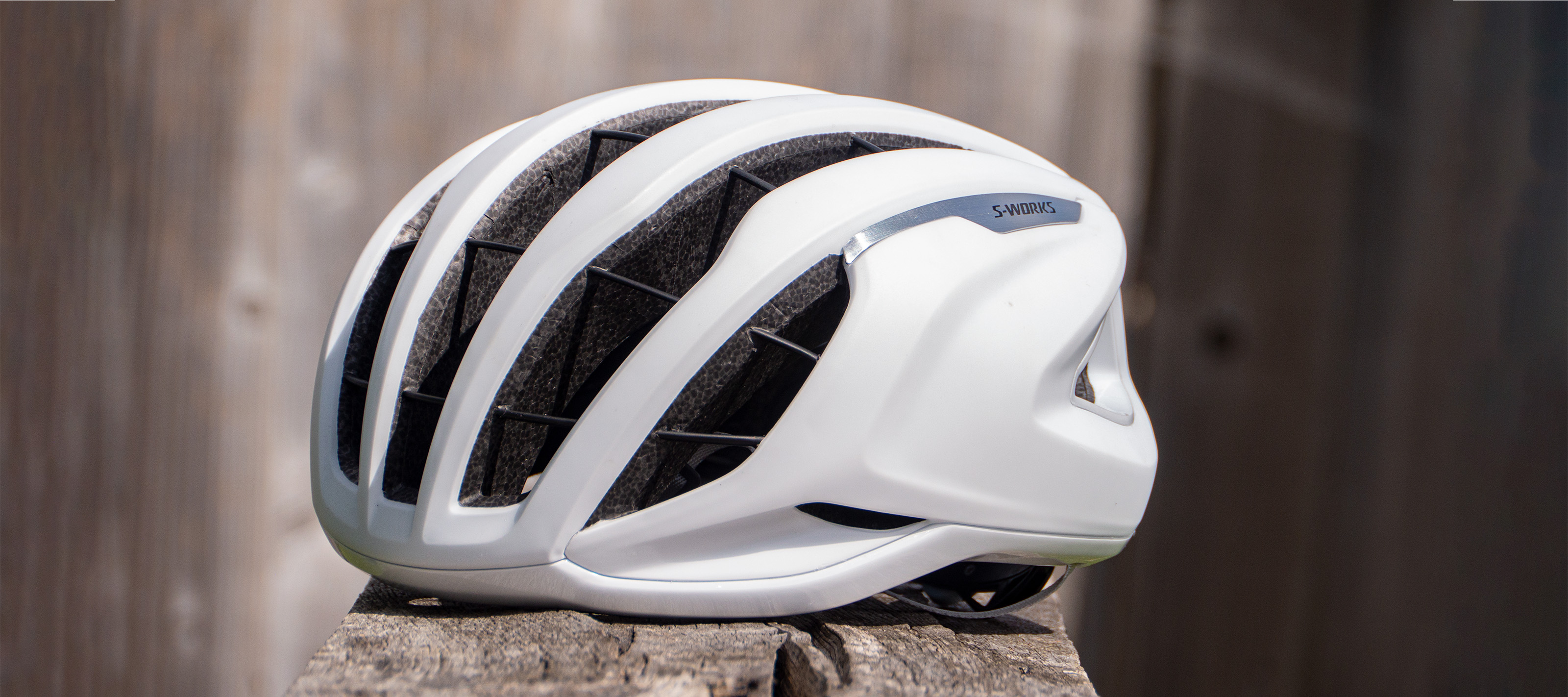Cyclingnews Verdict
The Specialized Prevail 3 Mips is comfortable, offers exceptional ventilation, and boasts one of the best scores in Virginia Tech's safety tests. It also looks great, fits well, and is priced in line with competitors.
Pros
- +
Incredible airflow
- +
Premium and stylish looks
- +
Decent weight
- +
Secure sunglass stowage
- +
Safety reassurance
Cons
- -
Straps stain, don't clean easily
- -
Step up on interior fouls my skull
You can trust Cyclingnews
Retail price: £250.00 / US$300.00 / €290.00 / AU$475.00
Available colours: Black, Vivid Red, White, White Mountains, White/Black, Fjällräven Green, Hyper Dove Grey, White Sage Metallic. Colours may differ by territory
Rotational Impact technology: MIPS Air Node
Weight: 276g as measured in size M
The Specialized Prevail has long been the ventilated lightweight helmet in the American brand's range and its latest iteration, the Prevail 3, launched in summer 2022 alongside its aero sibling the Evade 3.
As a range-topping helmet in the Specialized lineup, it's priced at £250.00 (US$300.00 / €290.00 / AU$475.00) and uses innovative technology to find the perfect balance of comfort, safety and performance for riders who want maximum ventilation.
Its biggest draw, even bigger than the abundance of airflow it provides, is that it boasts one of the highest ever scores in the independent helmet testing performed by the facility at Virginia Tech University, one of the very few to test rotational impacts.
I've been using the helmet on and off since its launch. It quickly earned a place in our buyer's guide to the best road bike helmets, but now it's time to share a detailed run through my experience with it, and how it fares against competitors from the likes of Kask, Bontrager and more.
Design and specifications
Starting with the basics, the Prevail 3 helmet is available in three sizes, in approximately 10 colours, although this differs by territory.
Visually it looks as though Specialized replaced all of the lateral pieces of EPS foam with carbon fibre rods, thus reducing their size and increasing the ventilation, but that’s only half the story.
Moulded into the EPS foam of the helmet is a carbon fibre skeleton called 'Aircage' that joins together these rods to create a strong, lightweight shell. Specialized then moulded the EPS foam onto it to create the shape of the helmet and provide direct impact protection.

On the inside, the brand then integrated MIPS 'Air Node' attachment points to improve rotational impact protection.
The result is a helmet that, at launch, boasted the highest score in the independent rotational impact testing performed by Virginia Tech with a score of 8.64.
The rear cradle mimics the cradle from other helmets in the Specialized range, with a vertical sliding height adjustment for the rear cradle and a rubber dial for retention.
The straps are smaller than most helmets, at approximately 6mm wide rather than the more common 10mm. This is largely unnoticeable in use; logic would dictate that it makes things a touch less comfy, but this isn't something I've felt was a problem in the past. I expect it helped me to avoid silly tan lines on my recent holiday in Morzine, although it's impossible to say for sure.
Regardless, all that design combines to create a really comfortable helmet that's exceptionally airy and reassuringly safe, which leads us nicely onto its performance.
Performance
Road bike helmet performance is made up of a few competing factors: comfort, ventilation, aerodynamics, impact protection, any added features, and cost. Most of these are at odds with each other, so improving one aspect usually means another gets worse.
Brands know this, of course, and the performance of any given helmet is a reflection of how a brand has chosen to — and then managed to — balance the various factors to create the desired product.
The Prevail 3’s focus is on ventilation over aerodynamics, and it absolutely excels in this department. I've been testing the helmet for more than a year, but it had its biggest test recently on my week-long riding holiday in Morzine, with the new catered chalet company Treacle Velo. The weather was absolutely scorchio. I saw 46C/114F at one point and spent many an hour slogging up mountains on the Factor O2 VAM in mid-afternoon 30-35C (around 90F) heat. There was the odd drop of sweat onto the inside of my sunglasses, but given the effort level and temperature, these were impressively infrequent.

Comparing that to its competition, I’ve recently also used the Kask Protone and the Specialized Evade 3 and find the limit of those top out at around 20C/68F before the sweat drops become regular.
Kask's Elemento suffers significantly here. I get the post-ride pad-squeeze on every ride and the forehead fountain starts to pour at any mild intensity over around 10C/50F. I've not tested every single helmet on the market, but having consulted with our tech writer Josh Ross, who recently completed our helmet grouptest and wrote the accompanying best road bike helmets buyer's guide, I have no doubt that the Prevail 3 is market leading in its ventilation.
In addition to the large vents, two small additional vents on either side provide a storage spot for your sunglass arms. They work nicely with various sunglasses. I've used them extensively with Oakley, 100%, Scicon and Koo, and briefly tried them with others too. Some models are best stored upside down to keep the nosepiece from fouling the helmet brow, but all pairs stay fixed in place comfortably.
On the comfort front, I have only one small complaint. Where the plastic cradle is moulded into the EPS on the inside, there is a step up of the helmet's EPS, and this fouls my head causing pain when pressure is applied.

It's not noticeable when wearing it, nor is it concerning enough for me to stop wearing it, but given any slight downward pressure on the helmet causes pain, I do worry that a crash could create an unwanted pressure point, rather than dissipate the force.
A medium is fit for sizes 55 - 59cm. (small: 51 - 56cm; large 58 - 62cm). I wear a size medium consistently, and the Prevail fits true to size and as expected.
At 276g, it's reasonably light on the head and apart from times when I've intentionally been thinking about its performance, it's never long before I forget I'm wearing it.
Interestingly, the Evade 3 aero helmet is only 2g heavier in the same size, despite packing much more EPS. If it's race performance you're after, the faster Evade 3 would be my recommendation between the two. It's the helmet I chose when riding Chasing Cancellara last summer.
I’ve not objectively tested the aerodynamics of the Prevail, so cannot comment with any certainty or proof, but my experience with the helmet and my subjective feeling is that it performs fairly well here too.
I expect aero testing would highlight a detriment when compared to a dedicated aero helmet. Specialized claims the difference is nine watts.
The dial retention at the back is easy to work with one hand. The vertical sliding adjustment does take a bit of finesse and force to get it to move and is best done before you put it on, but it differs from the Protone and Elemento in that it stays put once selected. Those can be adjusted while wearing, but have a tendency to float up and down as you tilt your neck. Neither system is necessarily ‘right’ but I do prefer the Specialized way here.
When it comes to impact protection, this is another area that I’ve not tested, and hopefully, I never have to.
Luckily, the independent testers at Virginia Tech University run hundreds of helmets through a consistent drop test, measuring the rotational impact protection and converting that into a score. The lower the score, the better the levels of protection. The Prevail 3 scored 8.64, and at the time of writing, has only been beaten by two other road bike helmets: the Giro Aries Spherical and the Sweet Protection Falconer 2VI, which now occupy spots 1 and 2 respectively.
Unlike the Bontrager Circuit helmet which has mounting points for lights and cameras, there aren’t a huge amount of added features to discuss on the Prevail 3, as a performance-focussed road and race helmet.
The only add-on comes in the form of a safety provision that Specialized calls ANGI, the impact-detection device that pairs with your smartphone and will call for help if it detects a fall.
The sensor itself doesn’t come with the helmet, it’s an aftermarket purchase, but there is a small blank plate built into the rear cradle to house it, like all of Specialized’s helmets.
Value
Naturally, with so few compromises in performance, there has to be one in the price. At £250.00 (US$300.00 / €290.00 / AU$475.00) it's certainly at the premium end of the market, but it's in line with its competitors.
The Giro Aries Spherical, for example, is more expensive in the UK at £289.99, but they both share a retail price of $300 in the USA. Bontrager does come in a fair bit cheaper, at £160 for its Velocis MIPS, but in contrast, the Kask Elemento stands out alone at a staggering £335.
Verdict
The Specialized Prevail 3 is a high-performance helmet with little in the way of compromise. It's immensely comfortable while boasting class-leading ventilation and one of the best-tested impact protection scores on the market.
If it's the basic function of a helmet you're after, then less money will get you what you need. If you're a die-hard aero nerd, then you too should look elsewhere. As I mentioned, I'd opt for the Evade 3 for race-day performance unless the temperature is well above 20C/68F.
But if you're seeking maximum ventilation and want reassurance that you're wearing one of the safest road bike helmets around, then the Prevail 3 is hard to look past. It's the one I've reached for on nearly all of my rides this past year.
But of course, the biggest competitor will likely be the Giro Aries Spherical. Both have a unique take on MIPS that offers excellent results. Both offer excellent comfort and ventilation, and both look great. It's possible to mount a rear light to the Aries, but the ANGI sensor here is unique. The Virginia Tech score is slightly better on the Giro, but the decision will likely come down to personal preference, how each brand fits your head. It might help that the Specialized is cheaper.
| Design and aesthetics | Looks great, and an excellent rethink of helmet design that has provided exceptional results | 10/10 |
| Comfort | One slight bugbear with the step down of the EPS foam. It's still comfortable though and rarely enters my consciousness when riding | 9/10 |
| Ventilation | Can I give it 11/10? It's exceptional. Just remember to wear a hat in winter. | 10/10 |
| Safety | Among the very best ever tested by Virginia Tech | 10/10 |
| Value | There are cheaper helmets available, of course, but this is priced in line with competitors | 8/10 |
| Overall | Row 5 - Cell 1 | 94% |

Josh is Associate Editor of Cyclingnews – leading our content on the best bikes, kit and the latest breaking tech stories from the pro peloton. He has been with us since the summer of 2019 and throughout that time he's covered everything from buyer's guides and deals to the latest tech news and reviews.
On the bike, Josh has been riding and racing for over 15 years. He started out racing cross country in his teens back when 26-inch wheels and triple chainsets were still mainstream, but he found favour in road racing in his early 20s, racing at a local and national level for Somerset-based Team Tor 2000. These days he rides indoors for convenience and fitness, and outdoors for fun on road, gravel, 'cross and cross-country bikes, the latter usually with his two dogs in tow.
